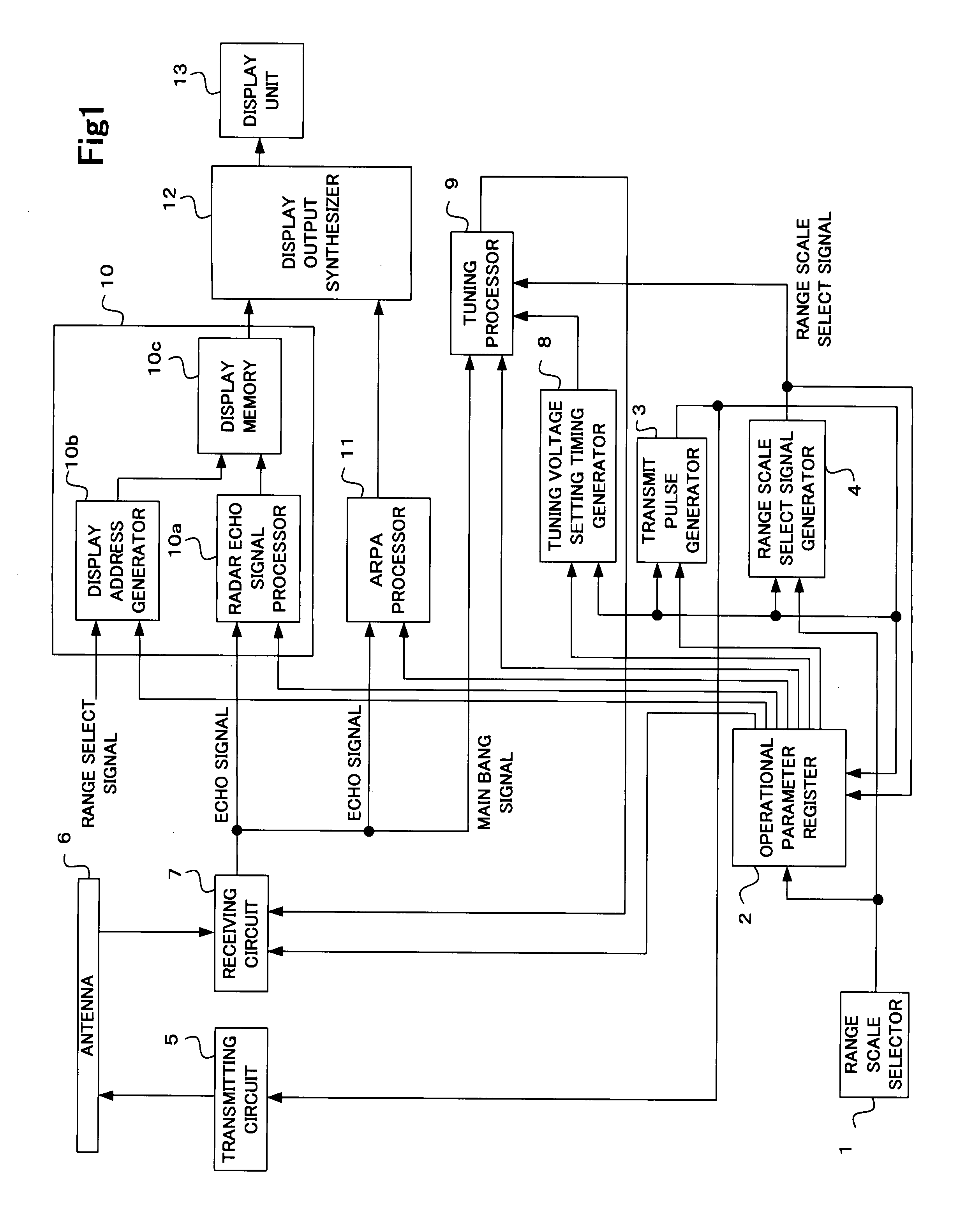Radar apparatus and radar picture display method
a technology of radar and display method, applied in the field of radar apparatus, can solve the problems of deteriorating range discrimination, conventional radar apparatus showing this drawback, and inability to discriminate between nearby targets
- Summary
- Abstract
- Description
- Claims
- Application Information
AI Technical Summary
Benefits of technology
Problems solved by technology
Method used
Image
Examples
first embodiment
[0035]FIG. 1 is a block diagram showing the configuration of a radar apparatus having an integral ARPA function according to a first embodiment of the invention. As shown in FIG. 1, the radar apparatus of the first embodiment includes a range scale selector 1, an operational parameter register 2, a transmit pulse generator 3, a range scale select signal generator 4, a transmitting circuit 5, an antenna 6, a receiving circuit 7, a tuning voltage setting timing generator 8, a tuning processor 9, an echo data generator 10, an ARPA processor 11, a display output synthesizer 12 and a display unit 13.
[0036]The range scale selector 1 determines a range scale for on-screen presentation in accordance with an operator input. If the operator intends to simultaneously present a pair of radar pictures on two different range scales, the operator selects a dual-picture display mode and the two range scales for on-screen presentation by manipulating appropriate operating controls, such as keys or k...
second embodiment
[0083]A radar apparatus having an integral ARPA function according to a second embodiment of the invention is now described with reference to FIGS. 6A, 6B and 7, in which elements like those of the first embodiment are designated by the same symbols and a description of such elements are not given below again.
[0084]The radar apparatus of the second embodiment is characterized in that an ARPA processor 11 selects one of echo signals obtained with different transmission pulselengths according to the distance from own ship position and produces motion-related information on tracked targets to be superimposed on display echo data by using the selected echo signal.
[0085]FIGS. 6A and 6B are diagrams showing how an echo detector 21c of the ARPA processor 11 works in the radar apparatus of the second embodiment. Shown in FIGS. 6A and 6B is an example in which the radar apparatus alternately transmits pulse signals having two different pulselengths, that is, the pulse signal having a short p...
PUM
 Login to View More
Login to View More Abstract
Description
Claims
Application Information
 Login to View More
Login to View More - R&D
- Intellectual Property
- Life Sciences
- Materials
- Tech Scout
- Unparalleled Data Quality
- Higher Quality Content
- 60% Fewer Hallucinations
Browse by: Latest US Patents, China's latest patents, Technical Efficacy Thesaurus, Application Domain, Technology Topic, Popular Technical Reports.
© 2025 PatSnap. All rights reserved.Legal|Privacy policy|Modern Slavery Act Transparency Statement|Sitemap|About US| Contact US: help@patsnap.com



